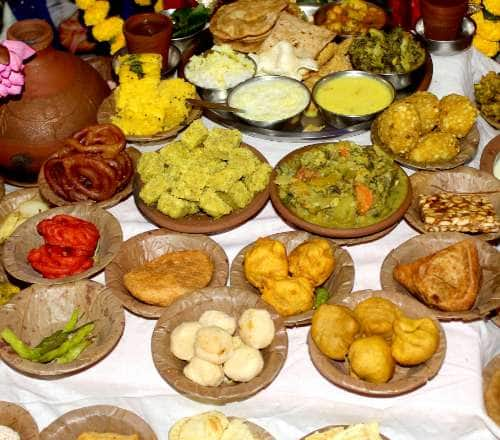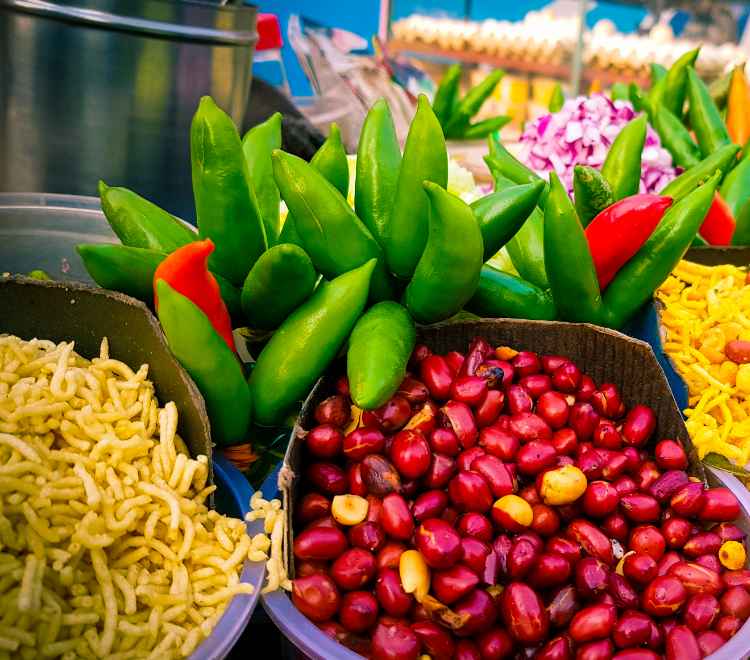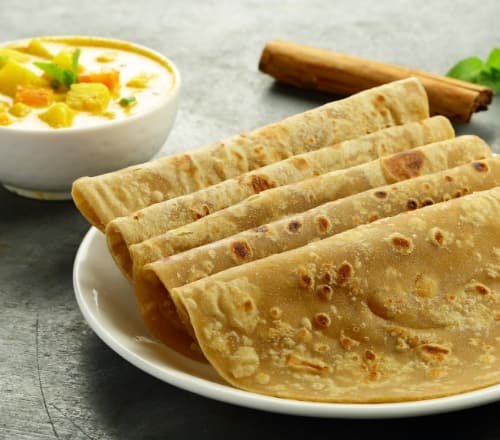Stay logged in to proceed with bookings, orders and offers.
On changing the terminal, you will loose items in your cart. Are you sure you want to change your terminal?
Drawing parallels among street foods of the east, west, and north India
My fellow passengers took out their wallets in unison when the hawker entered the compartment carrying a handwoven basket on his head. The Asansol-Hatia passenger train was rattling through the jungles of Chhotanagpur. I held up a 10-rupee note to the hawker. He smiled and briskly threw in the ingredients in a newspaper cone and handed it to me; jhal muri – my favourite street food. Every handful into my mouth reminded me why this is my favourite street food.
'Muri moshala… muri moshala!'
Jhal means spicy in Bangla, and Muri refers to puffed rice that ties the jhal together. The preparation is simple. Add chopped onions, tomatoes, coriander, and peanuts to a bowl of puffed rice. Mix it well with mustard oil and pickle. Garnish with green chilli and lemon juice, and the jhal muri or muri moshala is ready!
I'd grown up in Bokaro, Jharkhand, a city bordering West Bengal. This made Bengali jhal muri integral to my food culture, a go-to snack on the streets and during road and train journeys. My mom even prepared it at home.
For a long time, Jhal Puri and Phuchka was the only street food we knew. Even though, during the pre-internet age, one of my favourite songs was a popular Bollywood number: Main to raste se ja raha tha, main to bhel puri kha raha tha (I was walking along the road eating bhel puri).
One day, my mom took me to the city fair, where I first tasted bhel puri. But my rendezvous with authentic bhel puri had to wait another decade.
I travelled to Delhi for the first time when I was 13. It was the quintessential family trip that involved visiting all historical places. I remember my dad being adamant about exploring Chandni Chowk despite the parking difficulties.
Chandni Chowk is known for its street food. The locals take pride in its age-old culture and the bustling food scene. This is where I first tasted Papdi Chaat, Dahi Bhalla, and Dahi Papdi. Puffed rice was nowhere to be found.
The familiar Muri was replaced by Puri and Bhalla — it always amused me that these were also common surnames here. Puris are fried flour chapatis in most parts of India, but the puris of Delhi are special. They are smaller and flatter, making them crunchy and crispy. Bhallas, on the other hand, are dumplings made from the fried batter of urad lentils.
The use of Dahi or Curd added another difference to the street foods of Bengal and North India. Bengali street food hardly uses curd. My parents, now settled in a village in West Bengal, can never find curd in the market. All that is available is Mishti Doi or Sweet Curd!
Bengalis prefer sweets over sour dishes, except for phuchka! A Phuchka is a crispy ball filled with spicy mashed potato and/or boiled yellow peas. It is then filled with water infused with tamarind.
I encountered a doppelganger of phuchka during a later trip to Delhi for my higher education. The Golgappa is like a phuchka, except for the latter's solid filling. Golgappa is served only with mint-flavoured water. Sometimes, the vendors might add boondi — tiny balls of fried chickpea batter — to the water. Golgappa can also be made sweet by adding a dash of tamarind-ginger-jaggery chutney. The puris or balls of golgappa come in two variations: made of Wheat or Semolina. Semolina or Sooji Golgappas never became my favourite. But surprisingly, I like the taste of the water in Delhi's golgappas.
Most from east India prefer phuchka over golgappa. I feel like a traitor sometimes because I love them both equally!
But there is a third form of this dish that I have never become fond of.
Years later, I travelled to Mumbai for a short trip, and a friend took me sightseeing. We were walking on Bandstand, trying to ignore the cacophony of tourists crowding the gate of Shah Rukh Khan's Mannat.
Right before us was a line of stalls selling Mumbai's famous Pani Puri! Of course, I had to try this new street food. The pani puri looked similar to golgappas, except the seller filled boiled chickpeas in the puris. This popular ingredient here is Ragda in Mumbai. I would say I am not too fond of ragda. It was the middle of April, and Mumbai's humidity had me sweating bullets, and this warm street food didn't help my condition.
I immediately craved the cool Boondi Shikanji from Peeragarhi in West Delhi. I used to devour the lemony drink daily during Delhi's summers. The pani puri's sour-sweet water tasted almost exactly like the shikanji. That memory still didn't endear Mumbai's pani puri to me, and I gave ragda two thumbs down.
This first Mumbai trip ended soon, but I still hadn't tasted bhel puri.
Two years later, I moved to Mumbai for an internship and stayed within walking distance of Girgaum Chowpatty, famous for Chaat stalls. So, after years of waiting, I finally tasted Mumbai Bhel Puri at Chowpatty. I loved it!
Now, this wasn't the first time I had something called bhel puri. I had eaten at stalls in other cities that claimed to offer Bombay Bhel. But authentic Bhel Puri is only found in Mumbai.
Bhel puri has ingredients similar to jhal muri with different spices and a red tamarind-jaggery paste with green coriander chutney. The dish is sprinkled with sev — thin, crunchy noodles made of fried chickpea batter — and served. Bhel puri is much sweeter than jhal muri. Despite having similar ingredients, they taste different. But I love them both! I crave Bhel Puri in Mumbai and devour Jhal Muri when I'm in West Bengal. But I never try either dish in other places. They simply won't taste the same when taken out of their element.
My tight budget also introduced me to Mumbai's bread dishes: Anda Pav, Vada Pav, and the Bombay Sandwich. The humble vada pav – the poor man's vegetarian burger – was my staple when I couldn't find anything else in my budget. But the Bombay Sandwich has my heart, and I wish other cities would replicate its taste. This yearning is similar to my dream of finding good momos in Mumbai.
Even when Indian street foods have the same ingredients, their flavours differ from state to state. The climate of a place also affects the experience and enjoyment. As my taste buds are accustomed to the spices of Bengal and Delhi, I find it challenging to appreciate pani puri in hot and humid Mumbai.
I plan to extend my gastronomic adventures from the Lands of Dahi Papdi and Bhel Puri to the headquarters of Thukpa, Kahwa, and Poha.
But, no matter how many states I travel to, I always return to my beloved Jhal Muri – an explosion of flavour served in a newspaper cone by a kind old man in a rickety train compartment.





The Adani One expressly disclaims all liability, direct and indirect, in respect to actions taken or not taken based on any or all the contents of this Blog. The Blog is an opinion of the contributor based on the collation of data from various sources and is provided only for information purpose. Adani One does not canvass, advertise, solicit, invite or induct for any product, merchandise, information, brand or any other materials mentioned in the Blog, nor does it obtain any monetary benefit from the same. Reader is advised to read and apply his/her intellect and discretion in this regard. Any Intellectual Property mentioned in this blog belongs to the rightful owner. We do not intent to claim any interest over the same.